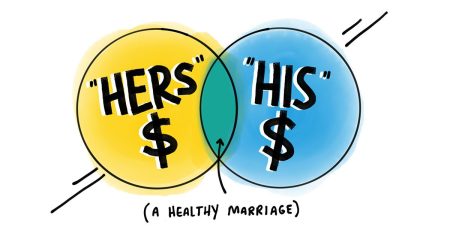Credit Sesame discusses the results of its May 2024 financial education survey.
Wealth gaps between different population groups occur for a variety of reasons. However, one clear-cut factor, if addressed, could open the door to economic opportunity for traditionally disadvantaged members of the American community.
A new Credit Sesame survey found strong links between personal finance education at school and economic success. People who reported receiving financial education during their school years are more likely to earn high incomes and use credit responsibly later in life.
Access to financial education is unevenly distributed across the United States. Credit Sesame’s survey indicated that financial education, or a lack thereof, has a material effect on future financial outcomes for individuals. A financial education for all may help level the future economic playing field for all Americans.
It is possible for individuals to receive this education at home or educate themselves later in life, but teaching household finance basics more evenly across US schools seems a relatively easy way of giving all students an equal opportunity.
Non-white groups less likely to receive financial education in school
Financial education is not provided to every student in America. In particular, non-white students are far less likely to receive it than white students. The Credit Sesame financial education survey found that nearly twice as many white respondents as non-white respondents reported receiving personal finance education in school. Though the difference is greatest between white and non-white students, there are also discrepancies among different non-white groups. Percentages of respondents who received a financial education at school have been rounded to the nearest 1% for ease of reading.
- 59% White
- 41% African American
- 33% Asian
- 31% Hispanic
- 35% all non-white
It seems clear that non-white students are less likely to receive a financial education at school.
Financial education and future financial success
To investigate future impact, the financial education survey also asked respondents about their current household income and credit scores.
People who received financial education in school are more likely to achieve higher incomes.
| Income | Financial education | No financial education |
| $200K+ | 19% | 3% |
| $75K+ | 60% | 27% |
It seems financial education in schools is also a predictor of future credit scores. 670 is often used as a dividing point between good credit and subprime credit. A higher percentage of individuals who received a financial education have scores of 670 or above.
- 85% of those who received a financial education
- 72% of those who did not receive financial education
The impact of poor credit on personal finances
The impact on credit scores is important because having bad credit has a direct impact on the credit products available to individuals. Bad credit makes it tough to get approved for credit. The survey found that people with low credit scores are roughly twice as likely to be rejected for a credit card and more than twice as likely to have a loan application rejected. In addition to credit products, a lower credit score can influence your ability to rent living accommodation.
| Credit Scores | Credit card application rejected | Loan application rejected | Rental lease application rejected |
| High (670+) | 31% | 23% | 13% |
| Low (under 670) | 62% | 51% | 21% |
States-level financial education in schools
Some states recognize the importance of financial education in closing financial gaps and make it part of the standard high school curriculum. However, this is far from universal.
According to The Economist, since 2020, seventeen states have added financial literacy coursework as a requirement for high school graduation, bringing the nationwide total to 25 states.
This means half the states do not provide this instruction to their students, which could mean that students in those states are at a financial disadvantage later in life.
Parental role in financial education
The survey found that many people get this valuable instruction at home. When asked how much financial education parents impart, responses were split fairly evenly.
- 34% Yes, very much
- 32% Only a little
- 34% No, not really
Optimistically. this means nearly two-thirds of parents pass on some financial knowledge to their kids. A more pessimistic view would be that only a little over one-third of parents provide substantial financial knowledge. Parents may not have the knowledge or time to give their kids a sound financial education, making it all the more important for schools to step in and fill the gap.
Financial education beyond childhood
The good news is that individuals who do not receive a financial education during childhood can go on to have high credit scores and high incomes. There are many government resources aimed at financial literacy, for example:
Credit Sesame also provides personal finance and credit management resources, including its Knowledge Hub, blog, free credit score, and free credit monitoring services.
If you enjoyed Financial education survey highlights inequality you may like,
Your credit score made simple with Sesame Grade™
You can see your credit picture at a glance with Sesame Ring™. The unique user interface enables easy and intuitive review of TransUnion data. Credit report information from all three bureaus is available if you choose to upgrade to Premium. In addition to data and information, the app provides a measure of overall credit health with your Sesame Grade™, and provides alerts, personalized action plans and AI-driven customer support. As you embark on your journey of credit and financial health improvement, knowledge is your most potent asset. Insights from all three bureaus can help you make sound financial choices, negotiate from a position of strength, and nurture your credit health. Regular reviews enable you to maintain accuracy, detect discrepancies and shape your financial future with confidence. Remember that credit is a tool that, when used wisely, can open doors to financial opportunities.
Survey Methodology
Credit Sesame commissioned this survey with the research company, SurveyMonkey.com to discover what financial inequities exist among marginalized communities. The data was collected between May 15th, 2024 and June 1st, 2024 from a sample of the general population of 748 participants based on a statistical distribution derived from the United States Census, ensuring a proportional representation of various demographics. Credit Sesame adhered to ethical guidelines throughout the data collection and analysis process and ensured participant confidentiality.
Disclaimer: The article and information provided here are for informational purposes only and are not intended as a substitute for professional advice.
Read the full article here










